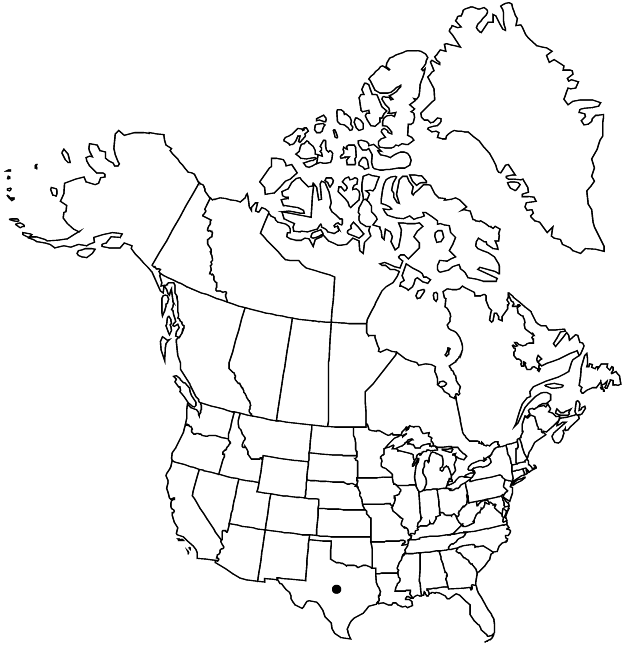Paronychia maccartii
Brittonia 18: 307. 1967.
Plants perennial; taproot ± stout. Stems sprawling, branched from base, 3–10 cm, puberulent. Leaves: stipules lanceolate, 2.5–5 mm, apex narrowly acuminate, entire; blade linear-oblong to linear-lanceolate, 2–10 × 0.7–1.5 mm, leathery, apex spinose, minutely puberulent. Cymes terminal, 10–20-flowered, congested, in clusters 0.5–1.5 mm wide. Flowers 5-merous, extended-urceolate, with enlarged hypanthial bulge and calyx cylindric to slightly tapering distally, 3.5-4 mm, moderately pubescent proximally, with minute, hooked hairs on hypanthial bulge, sparsely pubescent on calyx, densely so with hooked to coiled hairs on hood; sepals green to red-purple, midrib apparent, oblong, 1.9–2.1 mm, herbaceous to leathery, margins white, 0.2–0.3 mm wide, papery, apex terminated by awn, hood triangular-rounded, awn erect, becoming widely divergent, white, ± lanceoloid from proximal constriction, 0.8–1.3 mm, slightly scarious, distinct spine absent; staminodes narrowly subulate, 0.6–0.8 mm; style 1, cleft in distal 7/8, 0.7–0.8 mm. Utricles unknown.
Phenology: Flowering spring.
Habitat: Dense red sands
Elevation: 200-300 m
Distribution

Tex.
Discussion
Of conservation concern.
Paronychia maccartii is still known only from the type collection in Webb County.
Selected References
None.
Lower Taxa
"/10" is not declared as a valid unit of measurement for this property. "/10" is not declared as a valid unit of measurement for this property.